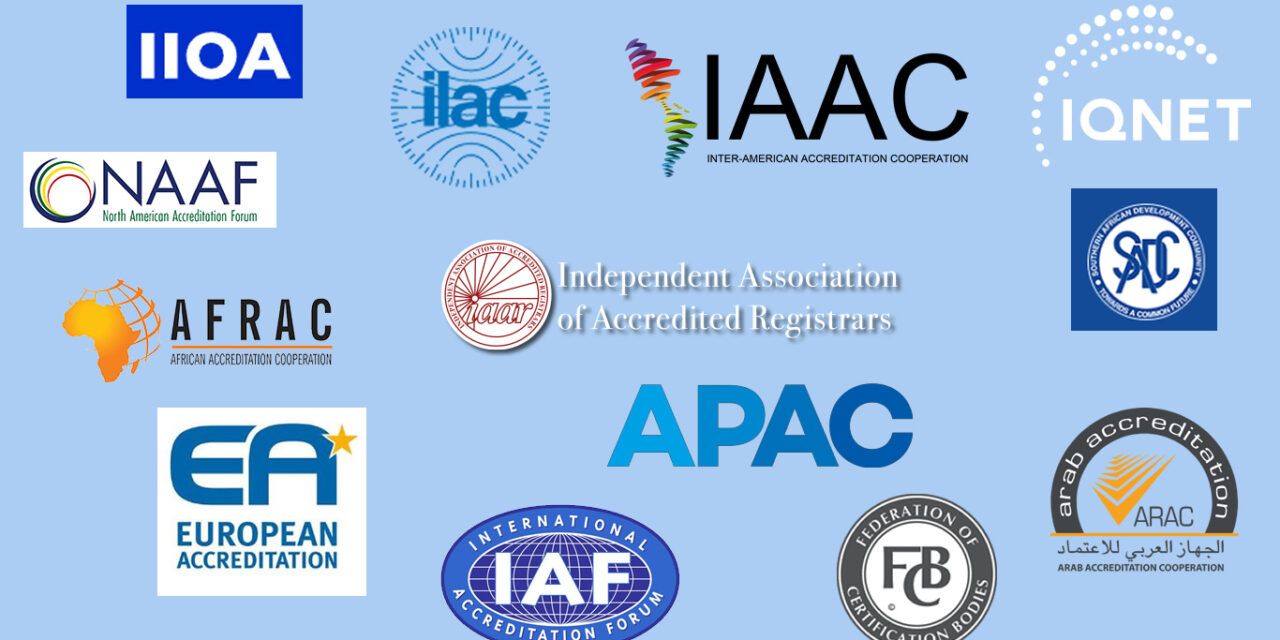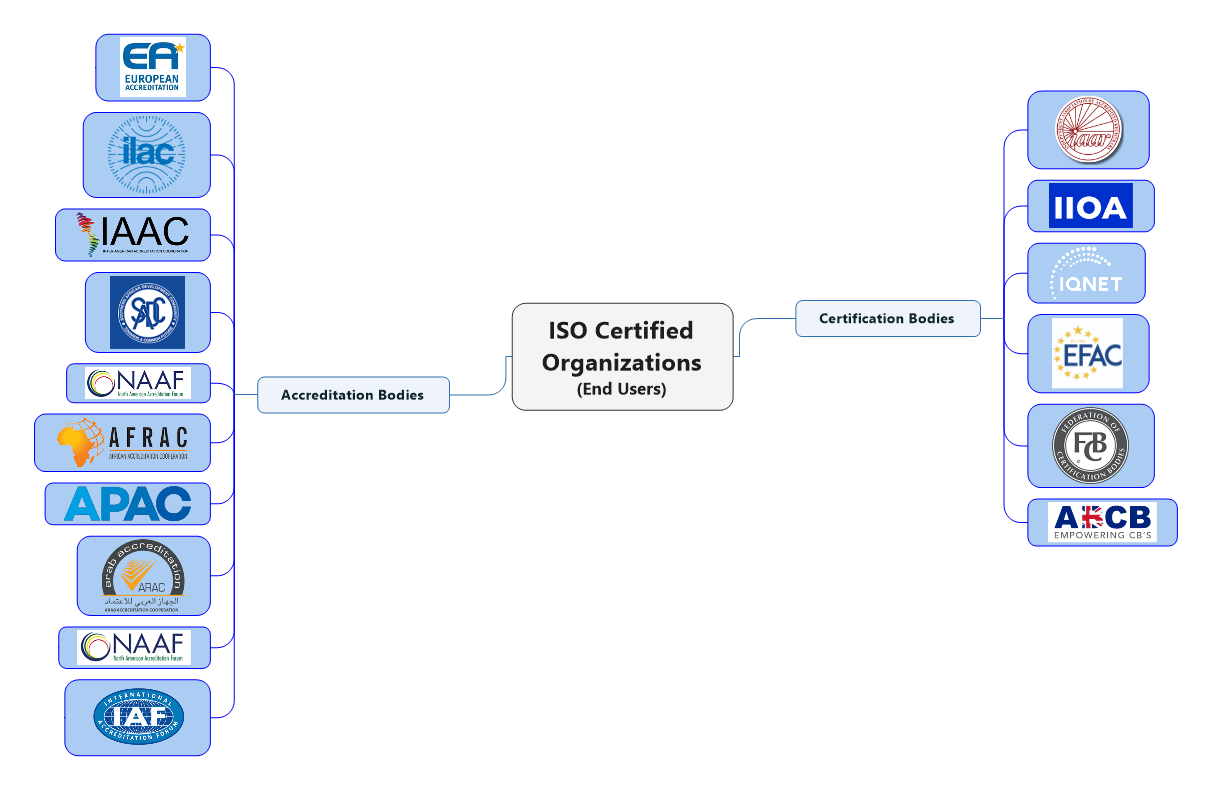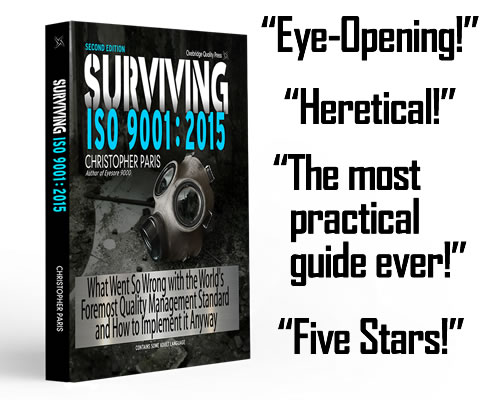A group of accreditation bodies have quietly — and rapidly — formed a new regional group, called the North American Accreditation Forum (NAAF) raising a host of questions, starting with… “umm, why?”
The head of A2LA, Lonnie Spires, recently filed documents to form a non-profit 501(c)(3) within the state of Maryland. The organization’s Articles of Incorporation list six executives from competing accreditation bodies (ABs) as the new “Directors”: Raj Nathan (IAS), Tracy Szerszen (Perry Johnson Laboratory Accreditation), Parveen Sadana (UAF), Cheryl Odoms Morton (AIHA Lab Accreditation), R. Douglas Leonard (ANAB), and Spires himself.
Within just weeks thereafter, the group showed up at the IAF and ILAC’s World Accreditation Day event and started promoting itself, and is now running ads asking other ABs to join its ranks at fees of between $1,500 to $3,000 a pop. Despite its name, it’s soliciting ABs from anywhere in the world, not just North America.
The speed of this rollout is unusual. Few in the industry saw this coming other than, one supposes, the six ABs involved in the deal. I spoke to major players at ISO/CASCO, TC 176, and even someone within ANAB itself, and none of them had heard about this group.
To his credit, Spires did quickly respond to my request of, well, “why?” — and explained the need for NAAF as follows:
While ILAC and IAF (and the regions) all allude to global acceptance of conformity assessment results (tested once, accepted everywhere), we know that is not true with all economies and regions. In North America we must adhere to the principles of the USMCA which respect competition and promote free and fair trade. NAAF is a group of like-minded Accreditation Bodies (ILAC and/or IAF signatories) and stakeholders that value and agree to promote the USMCA, as well as WTO, principles.
The “USMCA” agreement he is talking about is the US – Mexico – Canada Free Trade Agreement.
What this means in human-speak is that the North American bodies, like A2LA, aren’t pleased with EU regulations that insist each nation may only have one accreditation body. For example, the role of UKAS as the United Kingdom’s sole AB is enshrined in UK law. You literally cannot operate an alternate AB in that country. For EU countries, this is also true, as they have to comply with European Commission Regulation EC 765/2008, which makes the same “one AB per country” rule for that region.
Spires et al have no chance of doing anything about that law, but we can let them dream.
So… Much … Cooperation
The NAAF’s stated mission is that it exists “to facilitate coordination of accreditation bodies, associations and companies on conformity assessment issues pertaining to the region.”
The problem here is that that statement sounds nearly identical to the mission statements of nearly every other accreditation and certification “cabal” currently infecting the marketplace. Each of these uses words like “cooperation,” “collaboration,” or “coordination,” which should raise a lot of eyebrows given they are each a collection of competitors.
Let’s take a look.
Accreditation Body Cabals:
The IAF, which oversees the accredited certification scheme for management systems, says its goal is to “develop a single worldwide program of conformity assessment.
ILAC, the laboratory accreditation oversight body — soon to merge with IAF — claims it was formed “with the aim of developing international cooperation for facilitating trade by promotion of the acceptance of accredited test and calibration results.”
The IAF and ILAC then share a set of six Regional Accreditation Groups (RAGs), each of which have similar mission statements:
-
- IAAC (Americas): to “promote cooperation among accreditation bodies and interested parties of the Americas.”
- APAC (Asia Pacific): “facilitates the acceptance of conformity assessment results across the region and with other regions around the world.”
- EA (Europe): “share and build a common body of knowledge to develop a sound and harmonized approach to accreditation .”
- AFRAC (Africa): “Fostering collaboration among accreditation bodies in Africa.”
- SADC (South Africa): “Provide strategic expertise and co-ordinate the harmonisation of policies and strategies to accelerate Regional Integration and Sustainable Development.”
- ARAC (Arabic Middle East): “planning, development and coordination of the accreditation infrastructure in the Arab region.”
Certification Body Cabals:
The Independent Association of Accredited Registrars (IAAR) says its purpose is to “advance accredited third-party systems certification and enhance credibility for all interested parties.”
The Federation of Certification Bodies (FCB) says its members “discuss matters of common interest including changes and updates within the management system certification sector, operational challenges and improvements, [and] accreditation challenges and shared best practice.”
IQNet says it exists to “contribute to the development of effective, efficient, and user-friendly conformity assessment processes ensuring credible output.”
The UK ABCB (formerly called the Association of Certification Bodies, but which now simply uses the name “ABCB”) claims one of its goals is to “liaise with and influence bodies whose activities are relevant to the operations of members through informed representation.”
The European Federation of Associations of Certification Bodies (EFAC) says they aim to “provide a focus for the formulation of policy, opinions and views in matters of common interest to its members.”
The Conformity Assessment Society (CAS) says it “promotes knowledge exchange, professional growth, and joint initiatives that advance best practices.”
Finally, the Independent International Organization for Certification, recently rebranded as the Independent International Organization for Assurance (IIOA) claims its purpose is to “work cooperatively to continually improve the reliability of the assessment process to the benefit of all key parties.”
That’s a total of sixteen CB/AB cabals, most of which include the same exact members. A given accreditation body like ANAB or A2LA, for example, can be found to hold membership in at least half of those, if not more.
Here’s what this monstrous mess looks like, if you’re the guy in the middle getting ISO 9001 certified:
Now, keep in mind that these are just English-speaking organizations! There are probably more such organizations in Asian countries, such as India and Japan, helping CBs in those countries collude.
Someone Tell me What IQNet Actually Does
It has never been clear at all what these groups do exactly, but they have the cupric stink of collusion all over them.
Because it is located in the US, I did have some interaction with the IAAR, and even once gave a speech to their group. The meeting was closed-door, and I was ordered afterward to keep the meeting — and my appearance there — a secret. (I did not obey.) At the same time, they claimed they had a lawyer present at meetings to ensure no price-fixing went on, and they talked a lot about this subject… as in, they doth protested a bit much. I hadn’t even thought about price-fixing until they kept going on about it.
The same paranoid vibes come from IIOA, run by Marcus Long, and IQNet, run by Pedro Castro Alves. Neither Long nor Alves have ever answered my questions, put to them multiple times over ten years, on what exactly IIOA and IQNet do. No one I have spoken with who has any knowledge of the organizations can clarify that point, either.
A hilarious thread on LinkedIn shows just how far Alves will go NOT to answer the simple question of “what does IQNet do, exactly?” Go ahead and try it yourself: here’s his LinkedIn profile. Shoot him a message, asking what IQNet does. He will not answer.
To its credit, the new NAAF was more forthcoming, as I wrote above. Their mission may be blurry, but at least it’s not opaque like the others.
When Coordination Becomes Collusion
Frankly, I’m troubled by all this “coordination” and “cooperation” because, in any other industry, this is usually a recipe for illegal collusion. The fact that none of these organizations operate transparently nor allow public insight into what they do only increases this suspicion.
But is it illegal? Let’s look.
The US Sherman Act defines the boundaries for illegal antitrust activities within the United States. Related to illegal “collusion,” the US Dept of Justice admits that “these conspiracies are by their nature secret and difficult to detect.”
Traditionally, there are three main reasons that industry cabals form between competitors: price-fixing, bid rigging, and market manipulation. As I mentioned, the IAAR seemed really worried that someone would accuse them of price-fixing, and it’s not helped by the fact that IAAR members all have nearly identical pricing and that those rates have largely stayed flat for decades. (At least until IAS started depressing the market with its Indian laborers.) But that, by itself, is not sufficient evidence.
Are the cabals engaged in bid-rigging, then? To prove this we’d need to see evidence that certain members of the cabals, say ANAB or A2LA, were winning US Federal contracts over the others, and then sharing their winnings in secret, and illegally, with the “designated losers.” There’s certainly evidence that some ABs win more Fed contracts than others, but nothing to suggest bid-rigging.
The biggest argument to be made about the cabals is that they are involved in market manipulation. If anything, this isn’t just speculation, it’s literally in their mission statement. They are not hiding the fact that they are “collaborating,” “coordinating“, and “cooperating” to ensure that IAF- or ILAC-matrixed accreditations dominate entire world economies over other accreditation schemes. They have been so successful in this, in fact, that most people don’t even know they have accreditation options outside the IAF.
The illegal forms of market manipulation, per the DOJ, are “market division” or “allocation schemes“:
In such schemes, competing firms allocate specific customers or types of customers, products, or territories among themselves. For example, one competitor will be allowed to sell to, or bid on contracts let by, certain customers or types of customers. In return, he or she will not sell to, or bid on contracts let by, customers allocated to the other competitors. In other schemes, competitors agree to sell only to customers in certain geographic areas and refuse to sell to, or quote intentionally high prices to, customers in geographic areas allocated to conspirator companies.
The mission statements claim these cabals are all enabling cooperation, not geographical limitations; but it’s curious, then, as to why these bodies focus on geographical regions. The NAAF, for example, is focused on the US / Mexico / Canada region. So, yes, these cabals are absolutely engaged in market manipulation and geographical market division. That’s by design. But have they crossed the line into committing felonies?
As the DOJ said, “these conspiracies are by their nature secret and difficult to detect.”
At first blush, these cabals’ activities do not appear to hit the high marks of “market division” or “allocation schemes“, but there is definitely smoke in the air, and you know what they say about when you smell smoke. Either there’s a fire, or somebody is getting high.
So, What Is the Purpose?
The groups state that their aim is to ensure cooperation between ABs. But they are also competitors, and — let’s face it — these guys hate each other. There is no real reason these companies need to be cooperating in the first place.
So, no… it’s not really about cooperation and coordination.
Is it a regional thing? That doesn’t really pass muster either, since every single one of these bodies allows any organization, from any country, to join their ranks. APAC, for example, has members from North and South America, as well as Europe, none of which is in the “Asia Pacific.” And ANAB was once literally sued by a company for not being able to provide an assessor in Africa; why didn’t ANAB call their pals at AFRAC to help them?
So if they aren’t engaged in illegal collusion, like price-fixing and market manipulation, and, when the chips are down, they don’t actually cooperate… why do these groups exist?
There is one possible explanation: that the groups are fever-dream-inspired “make work” projects for otherwise obscure people to create jobs for themselves, or give themselves prestige or legitimacy. Without their cabals, people like Alves (IQNet) and Long (IIOA) and Pierre Salle (IAAR) would have nothing to do. Without the IAAR, Jeanette Preston (Smithers) would simply be the head of a CB that nobody ever heard of, named after a butler. Without membership in NAAF, Parveen Sadana (UAF) can hope people look beyond all those pesky allegations of international certification scams. Without APAC, Graeme Drake would still be writing standards on how to kill ostriches.
The IAF was started as a make-work project and grew into an international powerhouse. So maybe the others think they can achieve the same heights? Because — let’s be honest — none of these people are probably smart enough to actually carry out a nefarious crime like illegal price-fixing or criminal collusion. They just see other equally untalented people creating cabals, so they say to themselves, “hey, I can do that, too.”
But, I don’t know. There’s something else going on here, and it smells like a bit more than just idiots doing idioting. So, I’m keeping my eyes open. If one of these groups starts breaking laws, I hope to be able to spot it quickly.
UPDATE 5 April 2024: Added two more cabals: ABCB and EFAC. I presume there are even more out there that I haven’t heard of.
UPDATE 7 August 2025: Added Conformity Assessment Society (CAS).
Christopher Paris is the founder and VP Operations of Oxebridge. He has over 35 years’ experience implementing ISO 9001 and AS9100 systems, and helps establish certification and accreditation bodies with the ISO 17000 series. He is a vocal advocate for the development and use of standards from the point of view of actual users. He is the writer and artist of THE AUDITOR comic strip, and is currently writing the DR. CUBA pulp novel series. Visit www.drcuba.world









